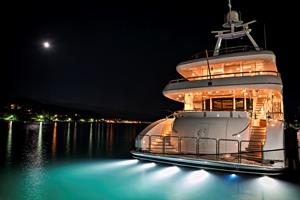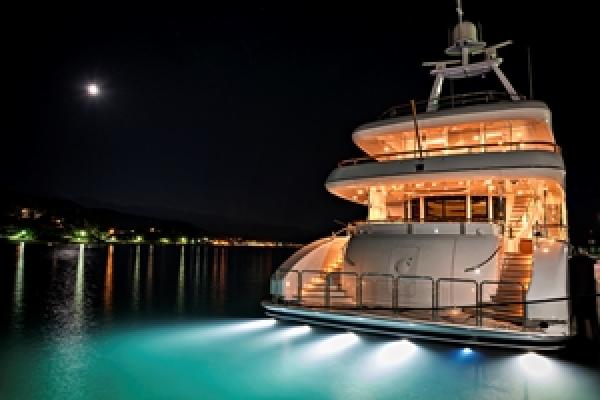
Danielle Southey
Published: September 28, 2017
Image


The Limitation of Liability for Maritime Claims Convention (the LLMC Convention) provides specified limits of liability for two types of maritime claims: loss of life or injury, and property claims.
A shipowner can rely on the LLMC to limit liability unless “it is proved that the loss resulted from his personal act or omission, committed with the intent to cause such a loss, or recklessly and with knowledge that such loss would probably result" 1.
The limits are perceived as virtually ‘unbreakable’, although a recent case has demonstrated that the courts can and do deny owners’ rights to limit when appropriate (see 'The 'Atlantik Confidence - No Weakening of the Test to Deny Limitation'.)
Limitation can be used as a defence to a claim or a ‘limitation fund’ can be established in the court before a claim is brought.
Latest Limits
The limits provided by the LLMC are determined by the tonnage of the vessel and there can be large disparities between the quantum of a claim and the level of limitation.
The limits are reviewed periodically by the Legal Committee of the International Maritime Organization and adjusted as deemed necessary. The most recent adjustment, an increase, was agreed by the IMO in April 2012 and enacted in most contracting states in June 2015 (see '1996 LLMC Protocol - Limits of Liability Increased'). Under English law, secondary legislation incorporating the increases came into effect on 30 November 2016.
Superyacht claims: lower tonnage… lower limits
Despite the significant recent increase in the limits, the LLMC can still be important when handling superyacht claims where the tonnage (and, therefore, limitation) is typically much lower than commercial ships.
Under the latest amendments, liability for property damage claims for any vessel under 2,000gt will be limited to SDR 1.51 million SDR (about US$2,140,887 million as at September2017). A large number of superyachts and most (if not all) of their toys, rigid inflatable boats ("RIB") and tenders, fall within this 2,000gt limit. English law applies an even lower limit of SDR 500,000 (about US$709,000 as of September 2017) to property damage claims against vessels under 300 gt.
Yachts, dinghies, toys and tenders
With super yacht water toys growing in popularity and variation, limitation is something that yacht owners might consider if a ‘toy’ (i.e. seabobs, hoverboards, semi-submersibles, tenders, jet skis and hovercrafts to name but a few) causes damage or worse, injury.
However, questions arise when damage or injury is caused by something falling outside the typical definition of a ‘ship’: should the LLMC still apply? Under English Law, the LLMC only applies to ‘seagoing ships’. A ‘ship’ is defined in the Merchant Shipping Act 1995 as ‘any structure…launched and intended for use in navigation as a ship or part of a ship’ - the emphasis being on the purpose of the vessel as opposed to its physical characteristics. This definition of ‘ship’ has been tested in a number of English law cases.
o In the case of Steedman v Schofield 2, a claimant suffered injury when his jet ski collided with a speedboat. The defendants argued the claim was time barred by a two year limit for claims in connection with a ‘vessel’ as set out in the Maritime Conventions Act 1911. The court had to decide if the claimant’s jet ski was ‘used in navigation’ and thus a ‘vessel’.
The court held that whilst it “may be possible to navigate a jet ski…it is not a “vessel used in navigation.”” As the claim did not fall within the Maritime Conventions Act, the claimant had three years to bring a claim for personal injury. Sheen J contrasted the construction of a jet ski with that of a boat, which conveyed an idea of a concave structure that could be boarded. Sheen J thought that giving the term ‘boat’ its usual meaning, ‘it did not encompass a jet ski’.
o The case of The Winnie Rig3 considered whether a private yacht used as a residential dwelling was a ‘vessel used in navigation’. The fact that a vessel was capable of being used in navigation was sufficient to fall within the definition of ship, even if, at the time of the incident, it was not being used in that way.
o The only Court of Appeal authority on what constitutes a vessel is the criminal appeal case of R v Goodwin4. A collision took place between two jet skis in Weymouth harbour and one rider was seriously injured. The defendant was accused of criminal offences under the Merchant Shipping Act. The defendant appealed on the grounds that the jet ski did not fall within the definition of ‘ship’.
The court again considered the meaning of ‘used in navigation’ and decided that ‘navigation’ should involve the “planned or ordered movement from one place to another”. Crafts that were used simply for fun and with no objective of going anywhere were not considered to be ships.
o The most recent reported case to consider the definition of a ship was The Sea Eagle5 . A passenger suffered a back injury during a trip around the Menai Straight when the eight metre RIB hit a wave. The defendant RIB owner argued the claim was time barred by the Athens Convention’s two year limit because the injury took place on a vessel. If the Athens Convention did not apply, the three year personal injury time bar applied.
The Athens Convention defines ‘ship’ as ‘a seagoing vessel’ and so the rib had to be both a ‘ship/vessel’ and ‘seagoing’. The Court reaffirmed the test for a vessel, being something ‘capable of being used in navigation’. Jervis Jay QC gave the example of HMS Victory to demonstrate that, whilst no longer used in navigation, vessels can undoubtedly still satisfy the ‘ship’ test.
‘Seagoing’ was determined to be more than a vessel ‘used in navigation’ and the court held that it was ‘necessary to consider the actual use to which the vessel in question is being put in the context of the claim being brought against her’.
Conclusion
The effect of limitation can be surprising. In a 1963 case, Cairns J held that ‘The limitation of liability sometimes lead to arbitrary results’6. In the appeal of the same case, Lord Denning went a step further, contending ‘limitation of liability is not a matter of justice. It is a rule of public policy which has its origin in history and its justification in convenience’ 7. Be that as it may, it can be a valuable tool if faced with a significant property damage or personal injury claim.
The facts of each case need to be carefully examined before seeking to rely on the limits of the LLMC, particularly if the claim involves a yacht, its tender or toys. Whilst tenders or toys might fall within the definition of ‘vessel’ if used for one purpose, less navigational roles might put them outside that definition and open owners up to a much larger exposure.
So if a claim arose on a tender used solely for pleasure purposes, might this bring about a different outcome than if that same tender were used to ferry crew or passengers to and from the shore? The answer, we think, is far from clear.
1 The LLMC Convention Article 4
2 Steedman v Schofield and Others [1992] 2 Lloyd's Rep. 163
3 The Winnie Rig [1998] 2 Lloyd's Rep 675
4 R v Goodwin [2005] EWCA Crim 3184
5The Sea Eagle [2012] 2 Lloyd's Rep 37
6 The Bramley Moore [1963] 1 Lloyd's Rep. 304
7 The Bramley Moore [1963] 2 Lloyd's Rep. 429


